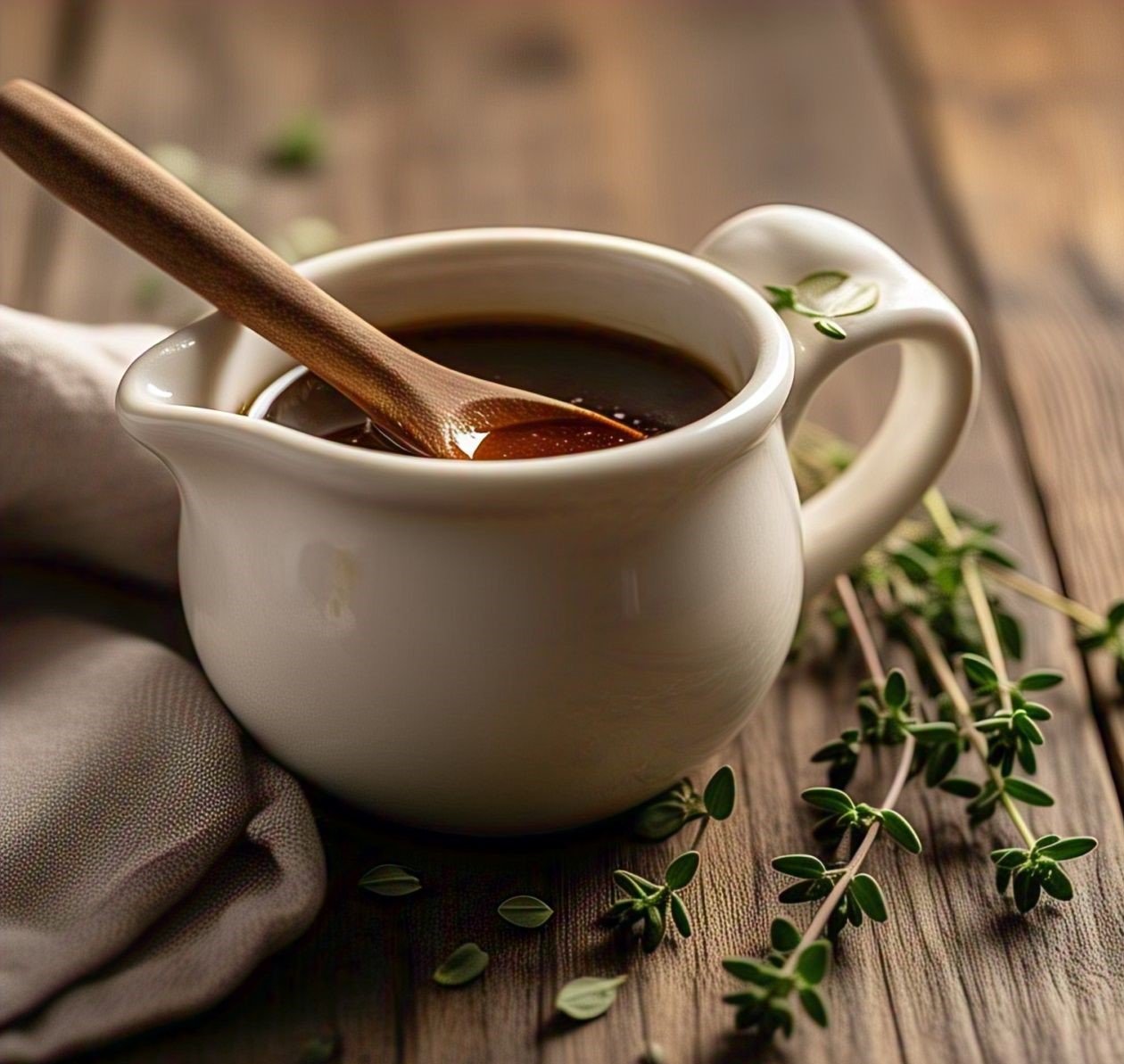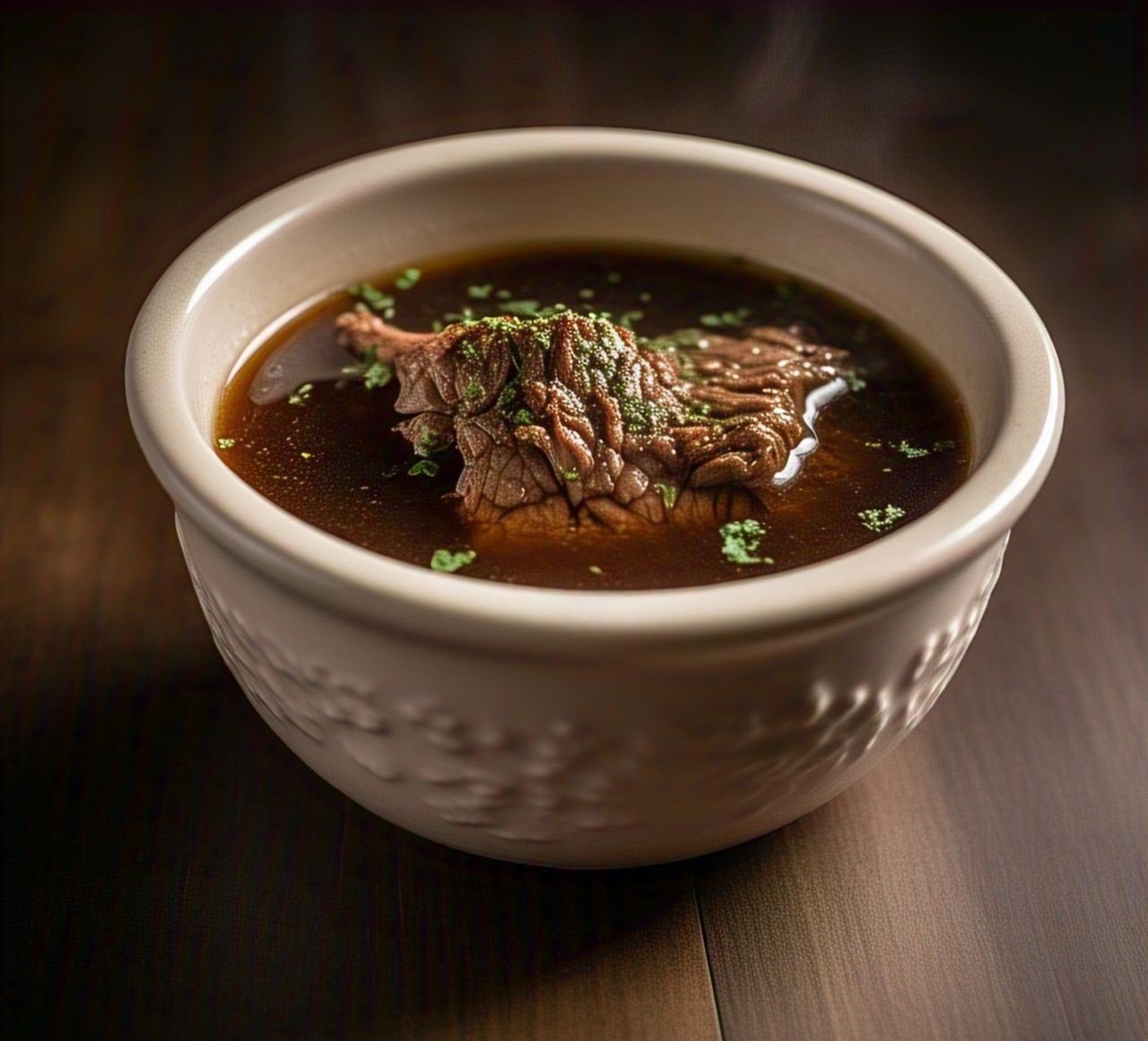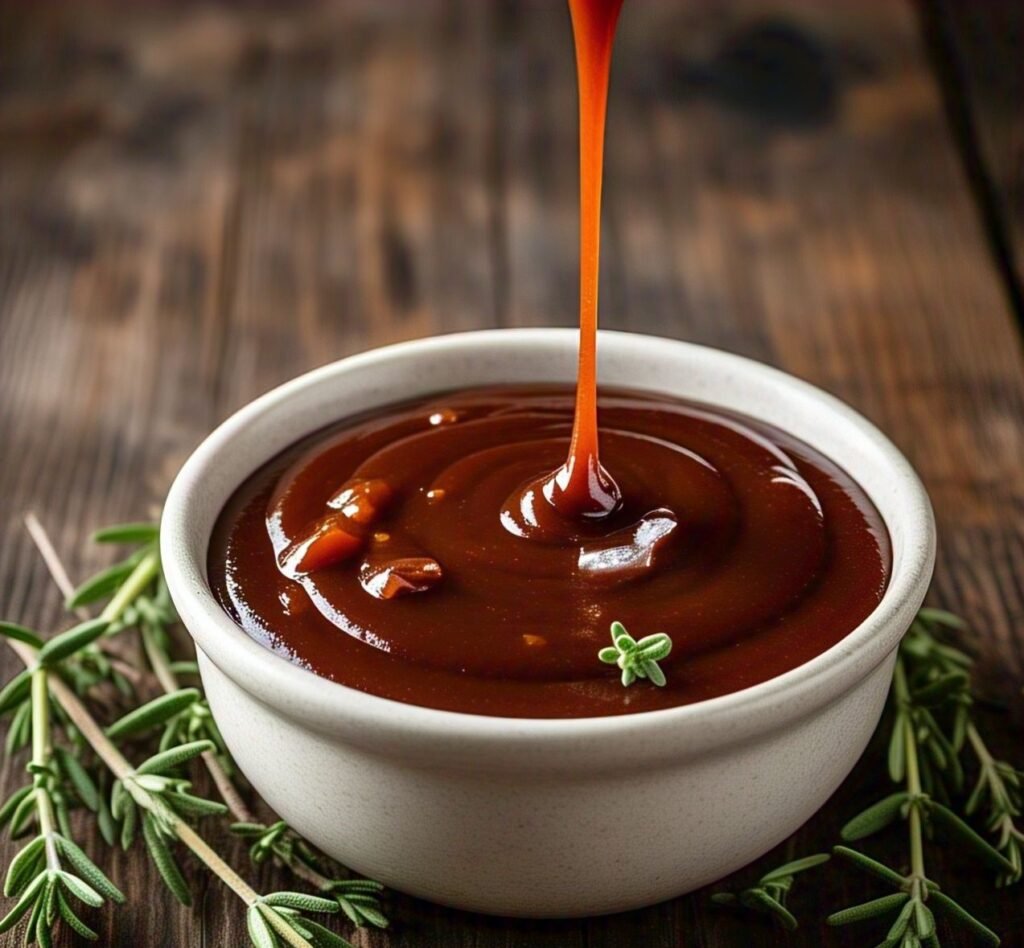Au jus sauce is a basic yet tasty backup that hoists meat dishes higher than ever. Meaning “with juice” in French, in its natural juices alludes to a light sauce produced using the regular juices delivered by meat during cooking. Generally presented with simmered or barbecued meats, it improves flavor and adds dampness, making a rich feasting experience.
Why Au jus sauce is important to a brisket sandwich?
Au jus sauce is the delegated magnificence of a brisket sandwich, lifting it from an unassuming dinner to a culinary work of art. This exquisite sauce, produced using the juices of slow-cooked brisket, adds dampness, delicacy, and a profundity of flavor that is difficult to imitate with different sauces or flavors. It adjusts the lavishness of the brisket and the bread, while its smooth surface covers the tongue and the top of the mouth with its rich, substantial flavors. Serving in its natural juices sauce as an afterthought likewise permits every individual to modify their sandwich however they would prefer, making it a fundamental part of a really valid and tasty brisket sandwich insight.
The Origins of Au Jus Sauce
The idea of in Au jus sauce began in French food, where it was a staple in customary dishes. French culinary experts stressed utilizing regular flavors to supplement meats, and in its natural juices turned into a refined method for serving dishes without concealing the fixings’ embodiment. Over the long haul, this procedure spread overall and turned into a sign of modern cooking, especially in Western foods.
In present day kitchens, in its natural juices is generally normally connected with prime rib, however its purposes stretch out to an assortment of meat dishes, including cook sheep, pork, and chicken.
Ingredients and Preparation:
Au jus sauce is surprisingly easy to make, requiring just a small bunch of fixings. The critical lies in separating most extreme flavor from top notch parts. Average fixings include:
Meat Drippings: The rich, delightful juices from simmered meat structure the base.
Stock or Stock: Hamburger, chicken, or vegetable stock adds profundity and volume.
Aromatics: Garlic, onions, and shallots upgrade the flavor.
Wine: Red or white wine can be added for intricacy and sharpness.
Spices: New thyme, rosemary, or straight leaves give fragrant notes.
Preparing: Salt and newly ground dark pepper are fundamental for balance.
Basic Recipe:
Subsequent to simmering meat, eliminate it from the container and put it to the side to rest.
Pour off overabundance fat from the broiling dish, abandoning the drippings and sautéed bits.
Place the skillet over medium intensity and add a sprinkle of wine to deglaze, scraping up the carmelized bits.
Add stock or stock and stew for 5-10 minutes, permitting the flavors to merge.
Strain the sauce through a fine-network sifter to eliminate solids.
Change preparing with salt and pepper to taste.
For a thicker sauce, a few recipes integrate a slurry produced using cornstarch or flour and water, however customary in its natural juices is normally slender and light.
Culinary Applications:
Au jus sauce is staggeringly adaptable and can be utilized in various ways:
Prime Rib and Hamburger Dishes: In its natural juices is the exemplary matching for prime rib, upgrading its rich flavor.
French Plunge Sandwiches: Serve close by cook hamburger sandwiches for plunging.
Cook Chicken or Sheep: Sprinkle over broiled poultry or sheep to keep the meat wet and delightful.
Vegetable Enhancer: Pour a modest quantity over simmered or barbecued vegetables for added profundity.
Sauce Elective: Utilize in its natural juices as a lighter substitute for customary sauce.
Tips for the Perfect Au Jus:
- Utilize Quality Fixings: Top notch stock and new spices have a huge effect in flavor.
- Try not to Hold back on the Drippings: The seared pieces in the dish, known as affectionate, are urgent for a rich sauce.
- Deglaze Appropriately: Wine or stock aides discharge the tasty pieces adhered to the dish.
- Strain Completely: A fine-network sifter guarantees a smooth, smooth sauce.
- Serve Warm: In its natural juices ought to be served hot to supplement the glow of the principal dish.
Variations of Au Jus:
While conventional in its natural juices is a light, delightful sauce, varieties exist to suit various cooking styles and tastes:
Garlic In its natural juices: Add broiled garlic for a more profound, exquisite flavor.
Herbed In its natural juices: Mix the sauce with different new spices like parsley, sage, and oregano.
Wine Decrease In its natural juices: Stew the sauce longer with red wine for a more thought character.
Hot In its natural juices: Consolidate a smidgen of cayenne pepper or hot sauce for heat.
Health Benefits and Considerations:
Au jus natural juices is moderately light contrasted with heavier sauces, making it a better choice for upgrading flavor without adding unnecessary calories. It is normally low in fat assuming that overabundance drippings are taken out, and utilizing low-sodium stock can diminish sodium levels.
Conclusion:
Au jus sauce is an immortal expansion to any culinary collection. Its effortlessness and style make it an ideal backup for meats, drawing out their normal flavors without overwhelming them. Whether you’re facilitating a proper supper or setting up an easygoing family feast, in its natural juices adds a dash of complexity and heavenliness to your table. With a couple of essential fixings and methods, you can dominate this exemplary sauce and enjoyment your visitors with its rich, flavorful appeal.
MORE Homemade Brisket Sandwich Sauces!
2





 Based on 1 Review(s)
Based on 1 Review(s)




